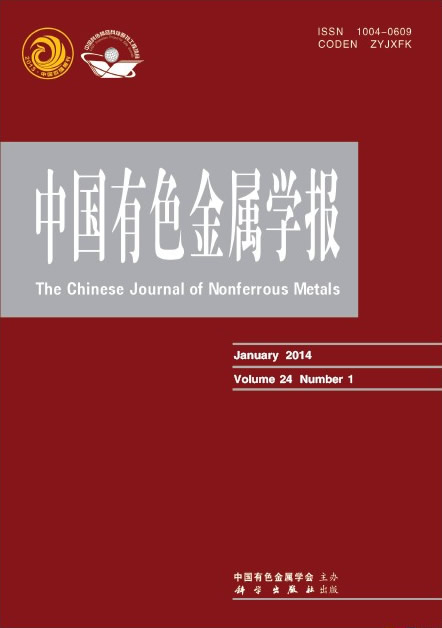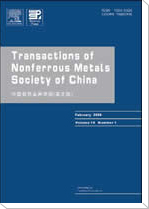(1. 中南大学 冶金科学与工程学院,长沙 410083;
2. 中南大学 深圳研究院 深圳高性能电池材料与器件工程研究中心,深圳 518057)
摘 要: 针对扩散极化及其影响因素,以LiMn2O4/石墨锂离子电池为研究对象,基于一维电化学模型开展了其放电过程中扩散极化的数值仿真研究。结果表明:在放电过程中,正负电极均存在固、液相扩散极化,且随着放电过程的深入,固、液相扩散极化均在增大。电极活性物质颗粒粒径对固相扩散过程影响显著,减小活性物质颗粒粒径能有效地降低固相扩散极化。当正、负极活性物质颗粒粒径分别由10和12 μm减小到5和6 μm,在1C放电 1 800 s时,颗粒表面和中心的锂离子浓度差分别降低至原来的25.35%和25.07%;当正、负极活性物质颗粒分别由10和12 μm增加至20和24 μm时,颗粒表面和中心的锂离子浓度差分别增加至原来的391.66%和266.96%。电极厚度是影响液相扩散极化的一个主要因素,厚度的减小能够缩短液相扩散的路径,从而减小电极的液相扩散极化。当正、负极电极厚度分别由90和60 μm增加至112.5和75 μm,在1C放电1 800 s时,厚度方向的最大锂离子浓度差与平均浓度的比值相应地由14.05%和1.71%增加至19.54%和2.61%;当正、负极厚度分别由90和60 μm减小至67.5和45 μm时,厚度方向的最大锂离子浓度差与平均浓度的比值分别由14.05%和1.71%减小至8.72%和0.98%。
关键字: 数值仿真;电化学模型;固相扩散;液相扩散;锂离子电池
(1. School of Metallurgy Science and Engineering, Central South University, Changsha 410083, China;
2. Engineering Research Center of High Performance Battery Materials and Devices in Shenzhen,
Research Institute in Shenzhen, Central South University, Shenzhen 518057, China)
Abstract:Taking a LiMn2O4/graphite battery as the research object, the diffusion polarization and its influencing factors of the battery were studied by numerical simulation method based on the one-dimensional electrochemical model. The results show that both liquid phase and solid phase diffusion polarizations exist in the positive and negative electrodes, and diffusion polarization increase with the conducting of the discharge process. The particle size of active materials has a distinct impact on the solid phase diffusion polarization, reducing the active material particle sizes can reduce the solid phase diffusion polarization effectively. As the particle radius of active materials in positive and negative electrodes decrease from 10 and 12 μm to 5 and 6 μm, respectively, the lithium ion concentration differences at surface and center will drop by 25.35% and 25.07%, respectively, when it discharges at 1C for 1 800 s. When the particle radius of active materials in positive and negative electrodes increase from 10 and 12 μm to 20 and 24 μm, respectively, the lithium ion concentration differences at surface and center in positive and negative electrode rise by 391.66% and 266.96%, respectively. The electrode thickness is a major influence factor of the liquid phase diffusion polarization, decreasing it can decrease the liquid diffusion path and the liquid phase diffusion polarization. As the thicknesses of positive and negative electrode increase from 90 and 60 μm to 112.5 and 75 μm, respectively, the ratios of the largest lithium ion concentration difference and the average lithium ion concentration along the positive and negative thickness direction increase from 14.05% and 1.71% to 19.54% and 2.61%, respectively. And when the thicknesses of positive and negative electrode decrease from 90 and 60 μm to 67.5 and 45 μm, respectively, the ratios between the largest lithium ion concentration difference and the average lithium ion concentration along the positive and negative thickness direction decrease from 14.05% and 1.71% to 8.72% and 0.98%, respectively.
Key words: numerical simulation method; electrochemical model; solid phase diffusion; liquid phase diffusion; Li-ion battery


